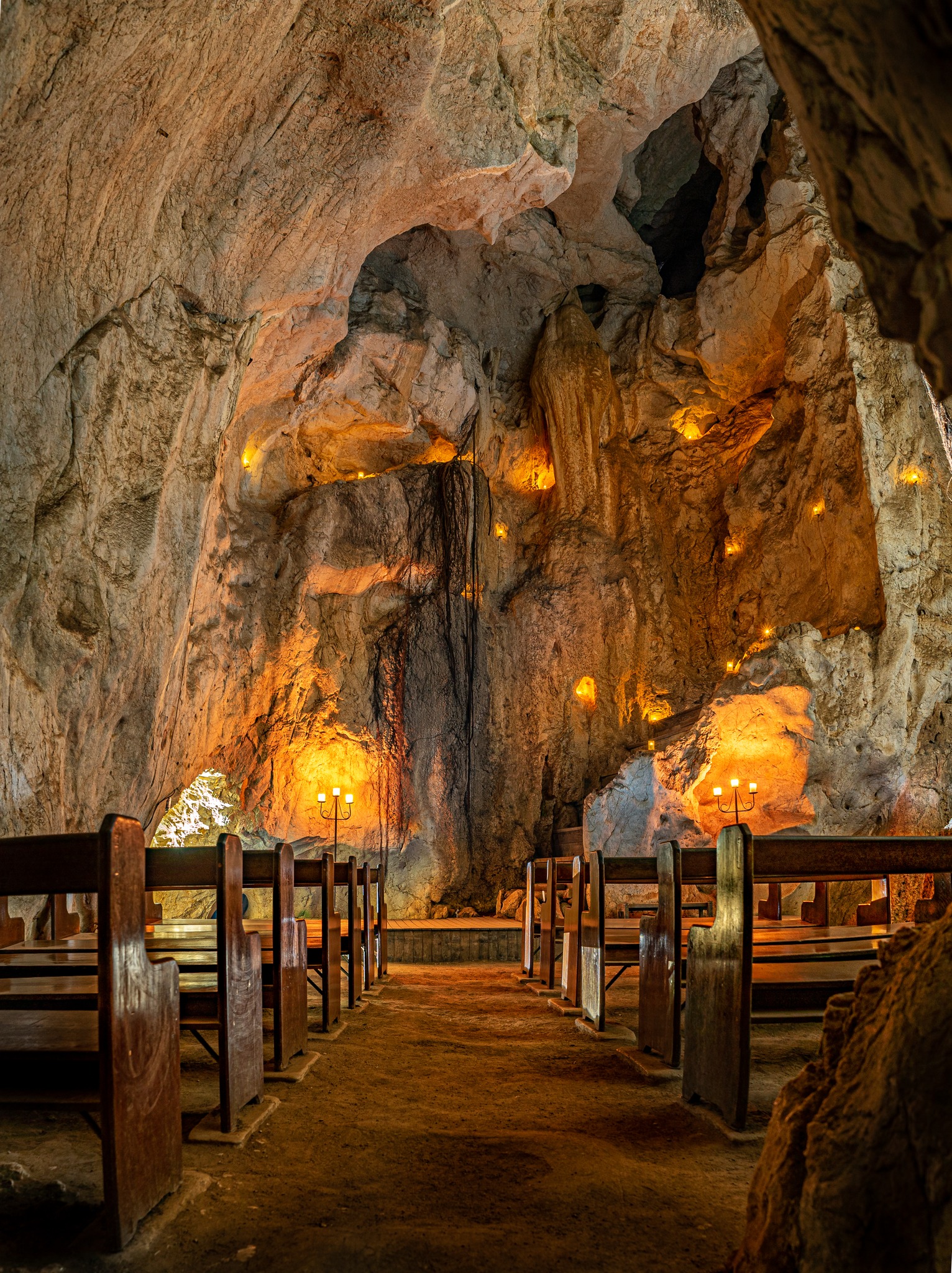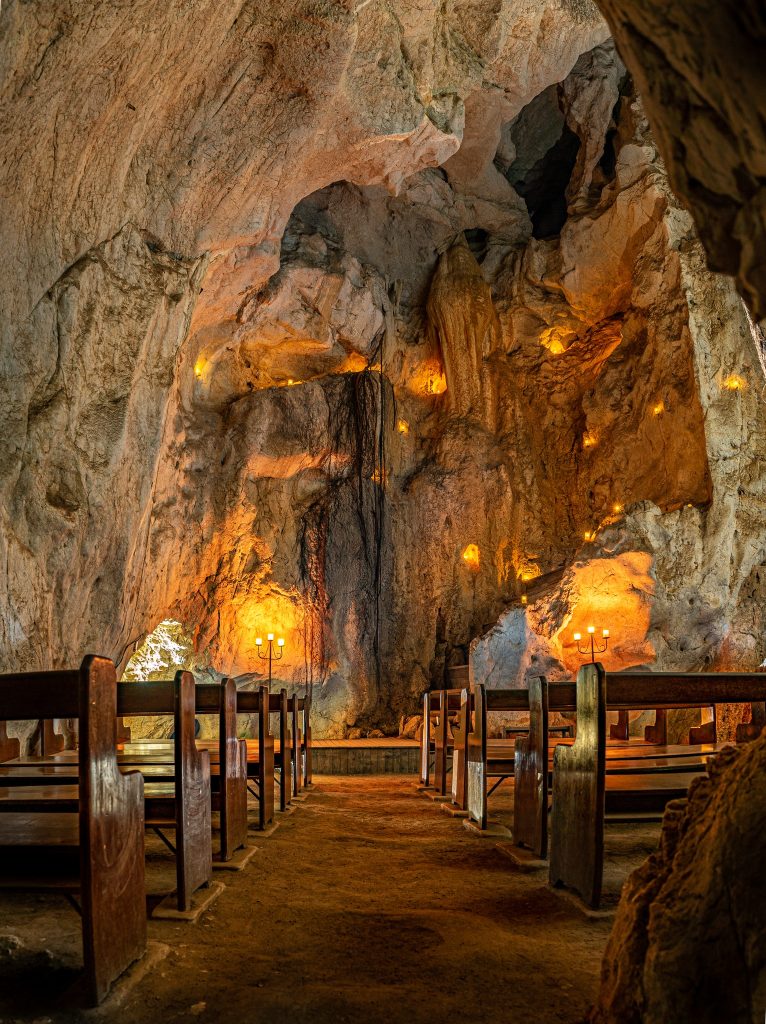
The Science Behind the Sound: Exploring the Acoustics of Cathedral Cave
Tucked away in the limestone landscape of Central Queensland, Cathedral Cave at Capricorn Caves offers more than just natural beauty… it offers sound. Not just any sound, but a rich, resonant acoustic experience that has captivated visitors for generations.
Whether it’s a couple exchanging vows or a soloist singing a haunting tune, the cave transforms every note into something extraordinary. But what exactly gives Cathedral Cave its signature sound? Let’s take a look.

How Limestone & Shape Amplify Sound
The answer lies in its natural architecture. Cathedral Cave’s smooth limestone walls reflect sound with incredible clarity. Unlike soft or porous surfaces that absorb sound, the hard, curved rock surfaces bounce audio waves around the chamber, amplifying voices and music in a way that feels both powerful and intimate.
The size and shape of the cave also contribute to its exceptional acoustics. Its vaulted ceilings and irregular surfaces help distribute sound evenly and create long, lush reverberation–a phenomenon where sound persists after the source has stopped, much like what you’d hear in a real cathedral or the Sydney Opera House.
Cave Climate: Nature’s Sound Engineer
Another contributing factor is the cave’s stable temperature and humidity. These environmental conditions slightly affect how sound waves travel through the air, softening some frequencies while enhancing others, giving music and speech a warm, immersive quality.
This natural tuning means performances in the cave require no microphones or amplifiers–the space itself does the work.
An Experience That Moves People
Visitors often describe the experience as magical. During a guided tour, guests are treated to a live demonstration where a guide might sing a few notes or play a piece of music.
It’s not uncommon for people to be moved to tears by the cave’s acoustic purity. Some have even said it sounds better than famous concert halls.
A Connection Through Time
But the connection between caves and sound isn’t new. In fact, archaeologists have long speculated that prehistoric peoples were drawn to echo-rich chambers for ritual and ceremony.
Ancient art and artefacts are often found in the most acoustically resonant parts of caves, suggesting that the power of sound has always played a role in how we relate to these natural spaces.
Why Performers & Couples Choose Cathedral Cave
Today, Cathedral Cave continues that legacy. It’s a sought-after venue for weddings, intimate concerts, and even underground opera performances. Couples are drawn to the cave not only for its natural beauty, but for the way it makes their vows feel amplified–literally and emotionally.
Musicians, too, are amazed at how their voices and instruments come alive without the need for technology. It’s a place where sound becomes part of the experience, not just something added to it.
Sound, Shaped by Nature
What makes Cathedral Cave so special is that its acoustics weren’t engineered. They were formed by nature over millions of years and that’s what makes a performance or ceremony here feel so unforgettable.
The cave doesn’t just carry sound–it holds it, shapes it, and sends it back with a depth and clarity that’s hard to replicate.
Hear It for Yourself
So whether you’re planning a wedding, a musical event, or simply looking to be wowed on a guided tour, the Cathedral Cave offers something extraordinary: the chance to hear and feel sound the way nature intended.

















